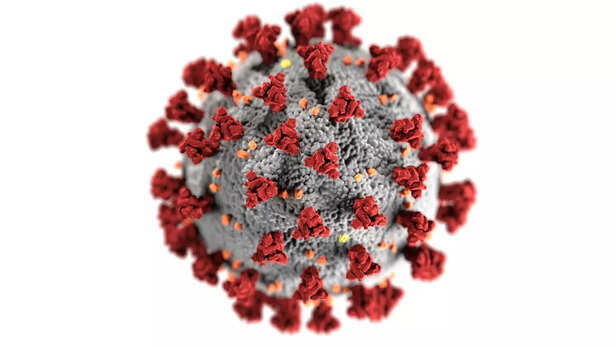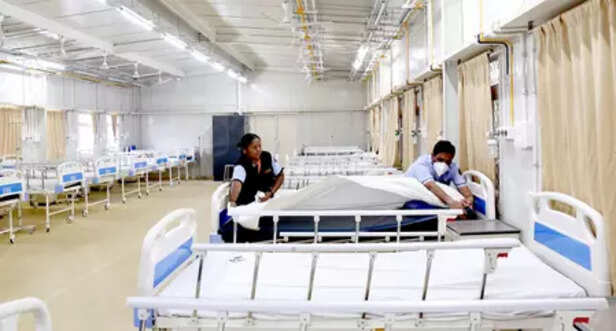New COVID Variant Alert: What You Need to Know Before It Hits Your City!
Ankita Rai | Tue, 03 Jun 2025
A new COVID-19 variant, known as JN.1, has emerged, raising concerns due to its rapid spread and potential to evade immunity. Classified as a Variant Under Monitoring, JN.1 shows symptoms similar to previous Omicron strains but with some subtle differences. Early signs include mild fever, fatigue, sore throat, headache, nasal congestion, and muscle aches. While generally causing milder illness, its high transmissibility makes vigilance crucial. Testing via RT-PCR remains essential, and vaccination continues to be the best defense. Recognizing symptoms early can help contain the spread and ensure timely treatment.
( Image credit : Pexels )
Photo:
Just when the world was beginning to move on from COVID-19, a new variant known as JN.1 has emerged. It belongs to the ever-evolving Omicron family and is currently being reported across multiple countries, including India. While it doesn’t appear to cause more severe illness than earlier variants, it is spreading faster—making it important to understand what it is, how it behaves, and what steps to take if you think you may have contracted it.

JN.1 is a subvariant of Omicron, the same lineage that produced previous variants like BA.5 and XBB. The World Health Organization has classified JN.1 as a "Variant Under Monitoring," which means it is being observed for signs of increased risk.
It was first detected in parts of Europe and Asia and has since made its way to India. Genetically, JN.1 contains mutations in the spike protein that may help it spread more efficiently and partially evade immunity from prior infections or vaccinations.
While this doesn’t necessarily make it more dangerous, it does make it more capable of infecting people, even those who have already had COVID-19 or are vaccinated.
Why Is It Spreading So Quickly?

JN.1 has mutations that give it an advantage when it comes to transmission. It binds more effectively to human cells and may temporarily evade the immune system, especially in individuals whose vaccine protection has waned. The variant is also spreading easily because the symptoms can be mild or subtle. Many people may not realize they’re infected and continue to engage in daily activities, inadvertently passing it on to others. On the upside, despite its quick spread, there has not been a corresponding increase in hospitalizations or deaths, which is encouraging.

Most JN.1 infections produce mild to moderate symptoms that resemble those of the common cold or flu. Reported symptoms include:
Low-grade fever
General fatigue or weakness
Mild, often one-sided headaches
Dry or irritated sore throat
Runny or blocked nose
Body aches or mild joint pain
Occasional dry cough
Loss of taste or smell (less frequently)
Mild gastrointestinal symptoms like nausea or loose stools
Unlike earlier, more aggressive variants such as Delta, JN.1 is less likely to cause severe respiratory issues. However, if you experience persistent high fever, chest pain, or shortness of breath, seek medical help immediately.

JN.1 and NB.1.81 are both part of the Omicron family. While they share many features, there are some distinctions:
JN.1 appears to spread more rapidly. Both variants can infect individuals with existing immunity, but JN.1 may be more effective at doing so. Neither variant is currently associated with more severe illness compared to past Omicron subvariants
The main public health concern is not how sick they make people, but how quickly they spread through the population.

If you're feeling unwell and suspect COVID, an RT-PCR test remains the most accurate way to confirm the presence of the virus. Rapid antigen tests are convenient, but they might not detect newer variants during the early stages of infection.
To identify the exact variant, such as JN.1, laboratories conduct genomic sequencing. While not done on every test, it helps public health officials track which variants are circulating.

If you experience symptoms consistent with COVID-19:
Get tested, preferably with an RT-PCR test
Isolate yourself to prevent spreading the virus, especially to vulnerable groups such as the elderly or those with chronic conditions
Monitor your health, paying attention to symptoms like fever, breathing difficulty, and energy levels
Notify recent close contacts so they can monitor their symptoms or get tested
Continue following basic precautions like wearing a mask, washing hands frequently, and maintaining distance where needed
There’s no need to panic, but taking responsible actions helps limit the spread.
How Is JN.1 Treated?

There is no variant-specific treatment for JN.1. Most people recover with basic care such as:
Rest and adequate hydration
Fever reducers like paracetamol
Over-the-counter medications for sore throat or nasal discomfort
Doctors may prescribe antiviral drugs such as Paxlovid for individuals at higher risk, including those with diabetes, cardiovascular disease, or weakened immune systems. In cases where symptoms worsen, hospitalization may be necessary.

Yes, vaccines remain valuable. Although JN.1 may partially evade immune protection, being vaccinated and boosted significantly reduces the risk of severe illness and complications. If you haven’t received a booster shot in the past year, this may be a good time to do so—especially if you belong to a high-risk category. While no vaccine offers complete protection against infection, they continue to be one of the most effective tools for preventing hospitalizations and long COVID.
The emergence of JN.1 is a reminder that COVID-19 is still evolving, even if it’s no longer dominating headlines. But unlike the early days of the pandemic, we are better equipped—scientifically, medically, and socially. Recognizing symptoms early, getting tested, isolating when necessary, and staying up to date with vaccinations are simple yet powerful steps we can take. New variants may continue to appear, but our preparedness is stronger than ever. Stay informed, take care of your health, and don’t ignore early signs. Being vigilant, not fearful, is the best way forward.
Unlock insightful tips and inspiration on personal growth, productivity, and well-being. Stay motivated and updated with the latest at My Life XP.
What is JN.1 and Where Did It Originate?

Covid 19
( Image credit : Pexels )
JN.1 is a subvariant of Omicron, the same lineage that produced previous variants like BA.5 and XBB. The World Health Organization has classified JN.1 as a "Variant Under Monitoring," which means it is being observed for signs of increased risk.
It was first detected in parts of Europe and Asia and has since made its way to India. Genetically, JN.1 contains mutations in the spike protein that may help it spread more efficiently and partially evade immunity from prior infections or vaccinations.
While this doesn’t necessarily make it more dangerous, it does make it more capable of infecting people, even those who have already had COVID-19 or are vaccinated.
Why Is It Spreading So Quickly?

It is spreading quickly
( Image credit : Pexels )
JN.1 has mutations that give it an advantage when it comes to transmission. It binds more effectively to human cells and may temporarily evade the immune system, especially in individuals whose vaccine protection has waned. The variant is also spreading easily because the symptoms can be mild or subtle. Many people may not realize they’re infected and continue to engage in daily activities, inadvertently passing it on to others. On the upside, despite its quick spread, there has not been a corresponding increase in hospitalizations or deaths, which is encouraging.
What Are the Symptoms of JN.1?

there are rising cases
( Image credit : IANS )
Most JN.1 infections produce mild to moderate symptoms that resemble those of the common cold or flu. Reported symptoms include:
Low-grade fever
General fatigue or weakness
Mild, often one-sided headaches
Dry or irritated sore throat
Runny or blocked nose
Body aches or mild joint pain
Occasional dry cough
Loss of taste or smell (less frequently)
Mild gastrointestinal symptoms like nausea or loose stools
Unlike earlier, more aggressive variants such as Delta, JN.1 is less likely to cause severe respiratory issues. However, if you experience persistent high fever, chest pain, or shortness of breath, seek medical help immediately.
How Is JN.1 Different from NB.1.81?

Covid 19
( Image credit : Pexels )
JN.1 and NB.1.81 are both part of the Omicron family. While they share many features, there are some distinctions:
JN.1 appears to spread more rapidly. Both variants can infect individuals with existing immunity, but JN.1 may be more effective at doing so. Neither variant is currently associated with more severe illness compared to past Omicron subvariants
The main public health concern is not how sick they make people, but how quickly they spread through the population.
How Can You Confirm If It's JN.1?

Virus
( Image credit : Pexels )
If you're feeling unwell and suspect COVID, an RT-PCR test remains the most accurate way to confirm the presence of the virus. Rapid antigen tests are convenient, but they might not detect newer variants during the early stages of infection.
To identify the exact variant, such as JN.1, laboratories conduct genomic sequencing. While not done on every test, it helps public health officials track which variants are circulating.
What Should You Do If You Think You're Infected?

How can it be treated
( Image credit : Pexels )
If you experience symptoms consistent with COVID-19:
Get tested, preferably with an RT-PCR test
Isolate yourself to prevent spreading the virus, especially to vulnerable groups such as the elderly or those with chronic conditions
Monitor your health, paying attention to symptoms like fever, breathing difficulty, and energy levels
Notify recent close contacts so they can monitor their symptoms or get tested
Continue following basic precautions like wearing a mask, washing hands frequently, and maintaining distance where needed
There’s no need to panic, but taking responsible actions helps limit the spread.
How Is JN.1 Treated?

what to do
( Image credit : Pexels )
There is no variant-specific treatment for JN.1. Most people recover with basic care such as:
Rest and adequate hydration
Fever reducers like paracetamol
Over-the-counter medications for sore throat or nasal discomfort
Doctors may prescribe antiviral drugs such as Paxlovid for individuals at higher risk, including those with diabetes, cardiovascular disease, or weakened immune systems. In cases where symptoms worsen, hospitalization may be necessary.
Are Vaccines Still Effective?

covid 19 vaccine
( Image credit : Pexels )
Yes, vaccines remain valuable. Although JN.1 may partially evade immune protection, being vaccinated and boosted significantly reduces the risk of severe illness and complications. If you haven’t received a booster shot in the past year, this may be a good time to do so—especially if you belong to a high-risk category. While no vaccine offers complete protection against infection, they continue to be one of the most effective tools for preventing hospitalizations and long COVID.
Final Thoughts
The emergence of JN.1 is a reminder that COVID-19 is still evolving, even if it’s no longer dominating headlines. But unlike the early days of the pandemic, we are better equipped—scientifically, medically, and socially. Recognizing symptoms early, getting tested, isolating when necessary, and staying up to date with vaccinations are simple yet powerful steps we can take. New variants may continue to appear, but our preparedness is stronger than ever. Stay informed, take care of your health, and don’t ignore early signs. Being vigilant, not fearful, is the best way forward.
Unlock insightful tips and inspiration on personal growth, productivity, and well-being. Stay motivated and updated with the latest at My Life XP.
Frequently Asked Questions (FAQs)
- What are the early symptoms of the new COVID variant JN.1?Mild fever, fatigue, sore throat, headache, and nasal congestion are common early signs.
- Is the JN.1 variant more severe than previous COVID strains?Current data suggests JN.1 causes similar or milder illness compared to earlier Omicron variants.
- How can I get tested for the JN.1 variant?RT-PCR tests detect COVID infection, while genomic sequencing identifies specific variants like JN.1.









